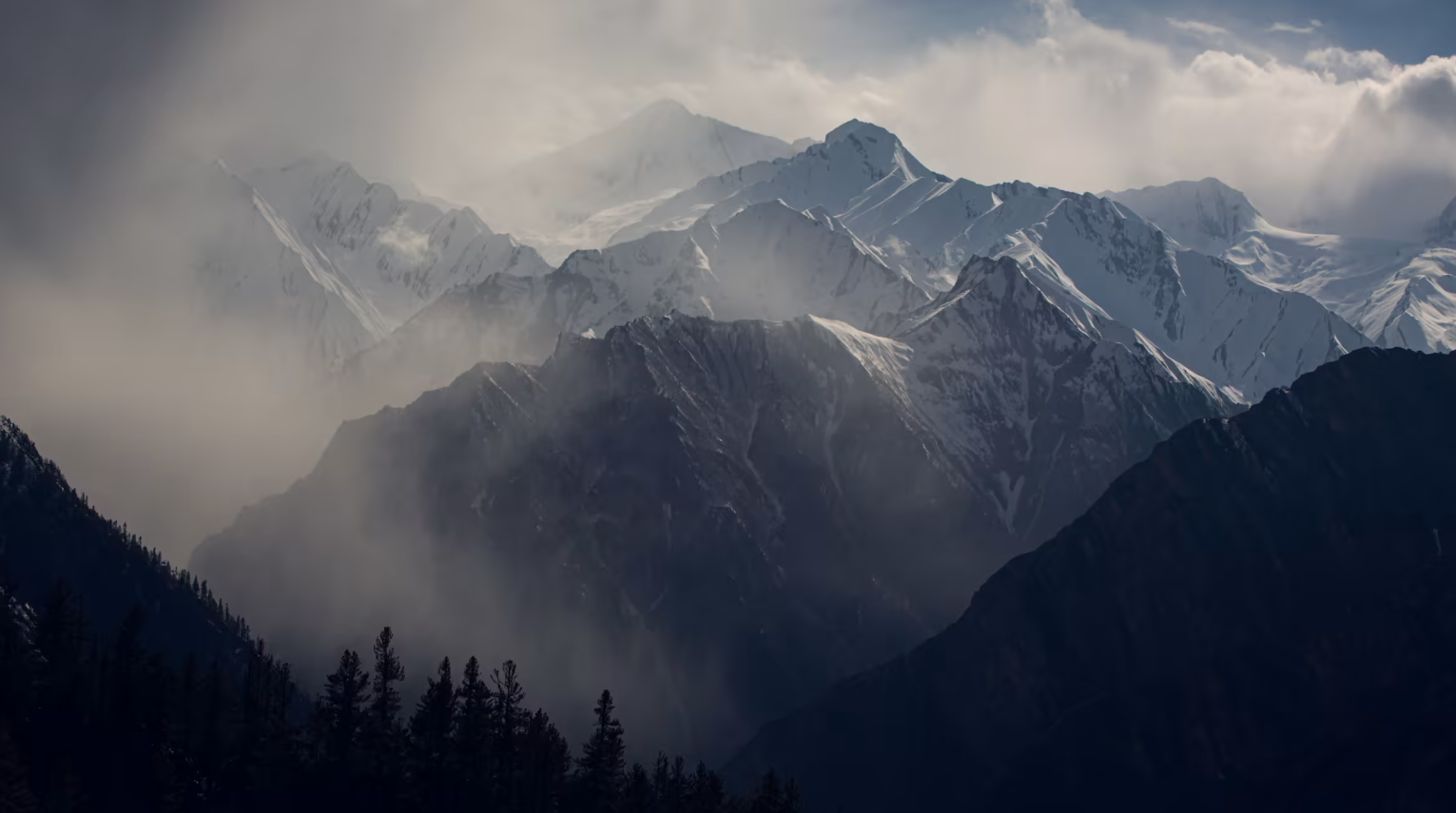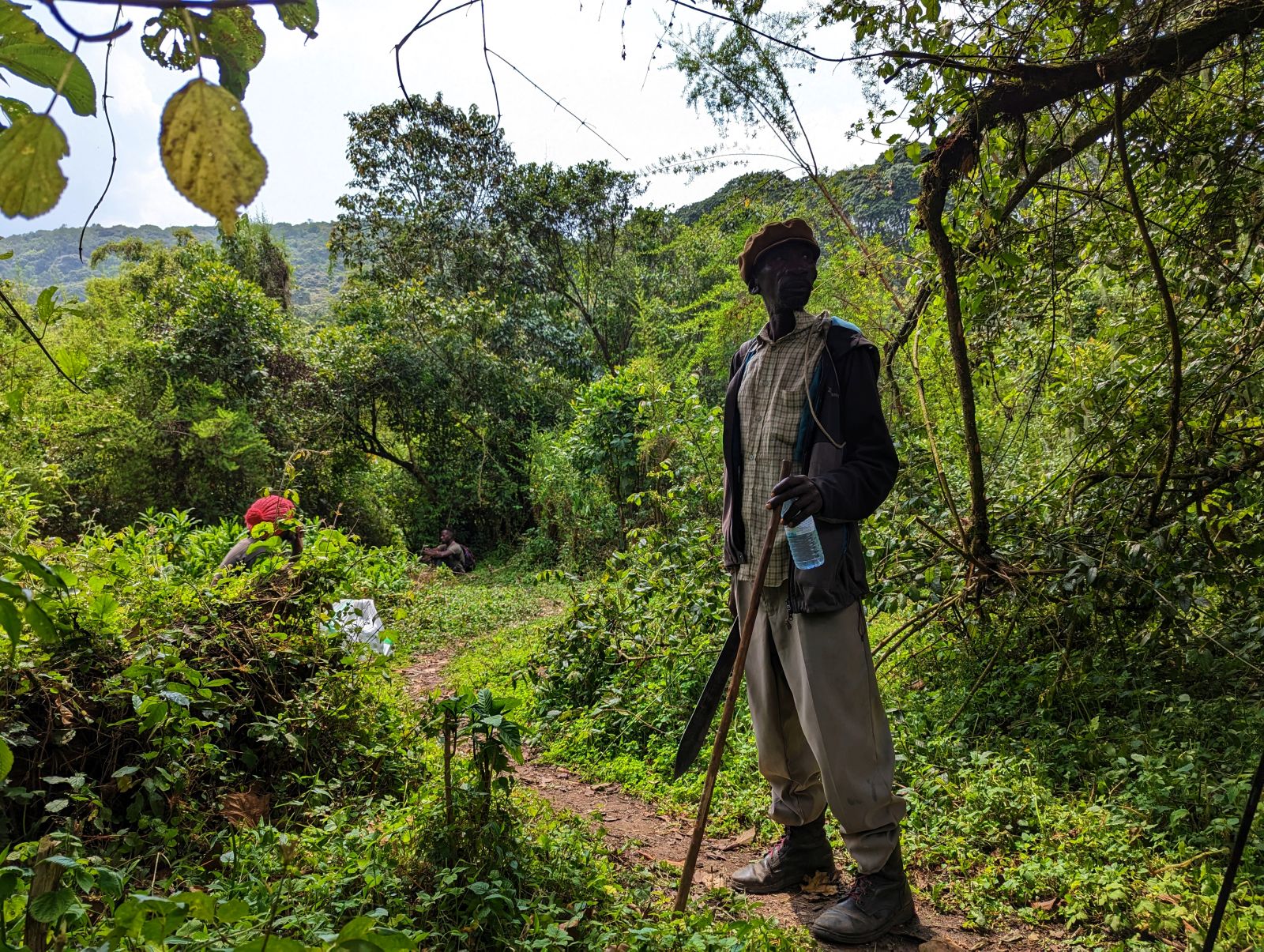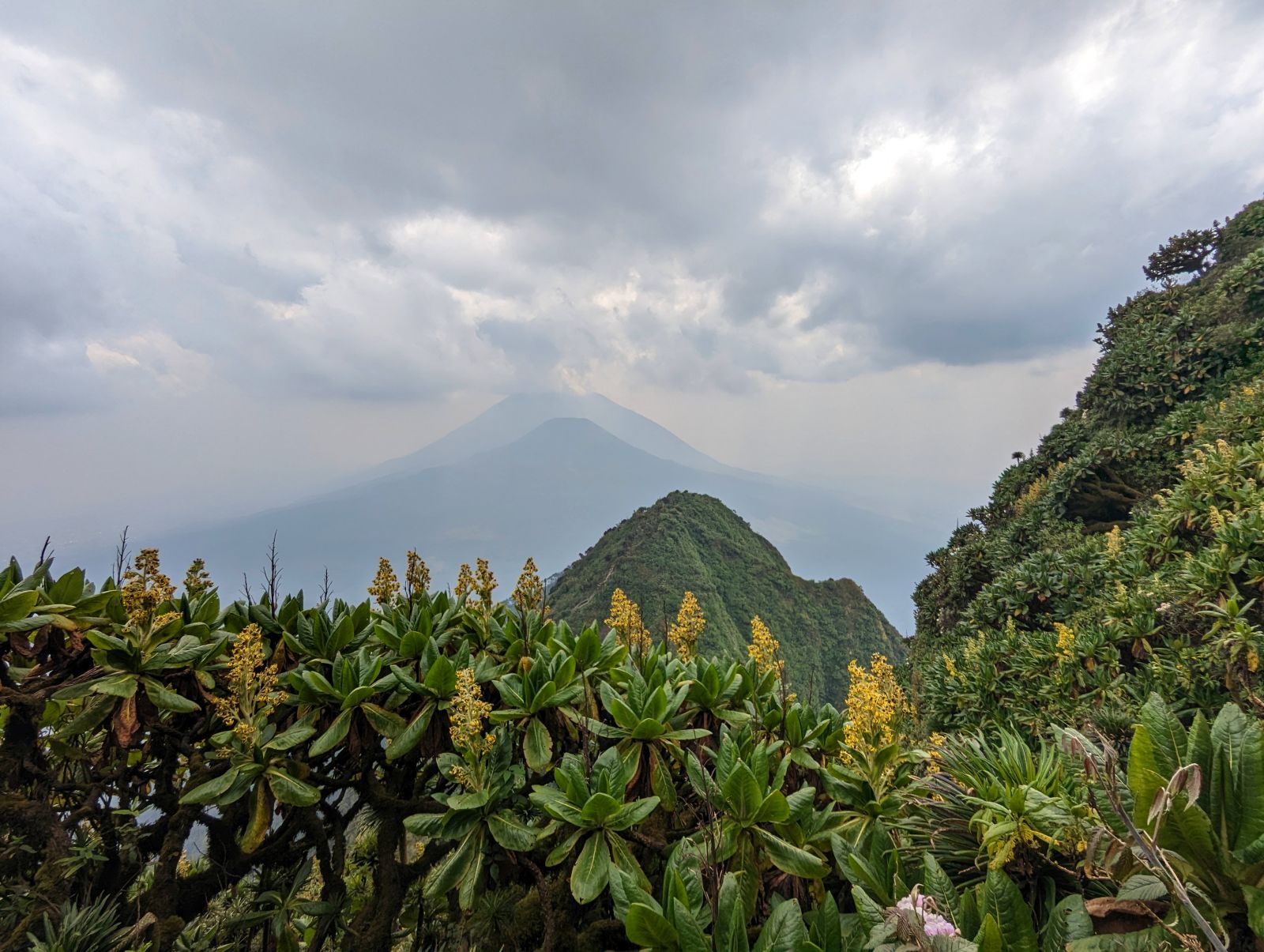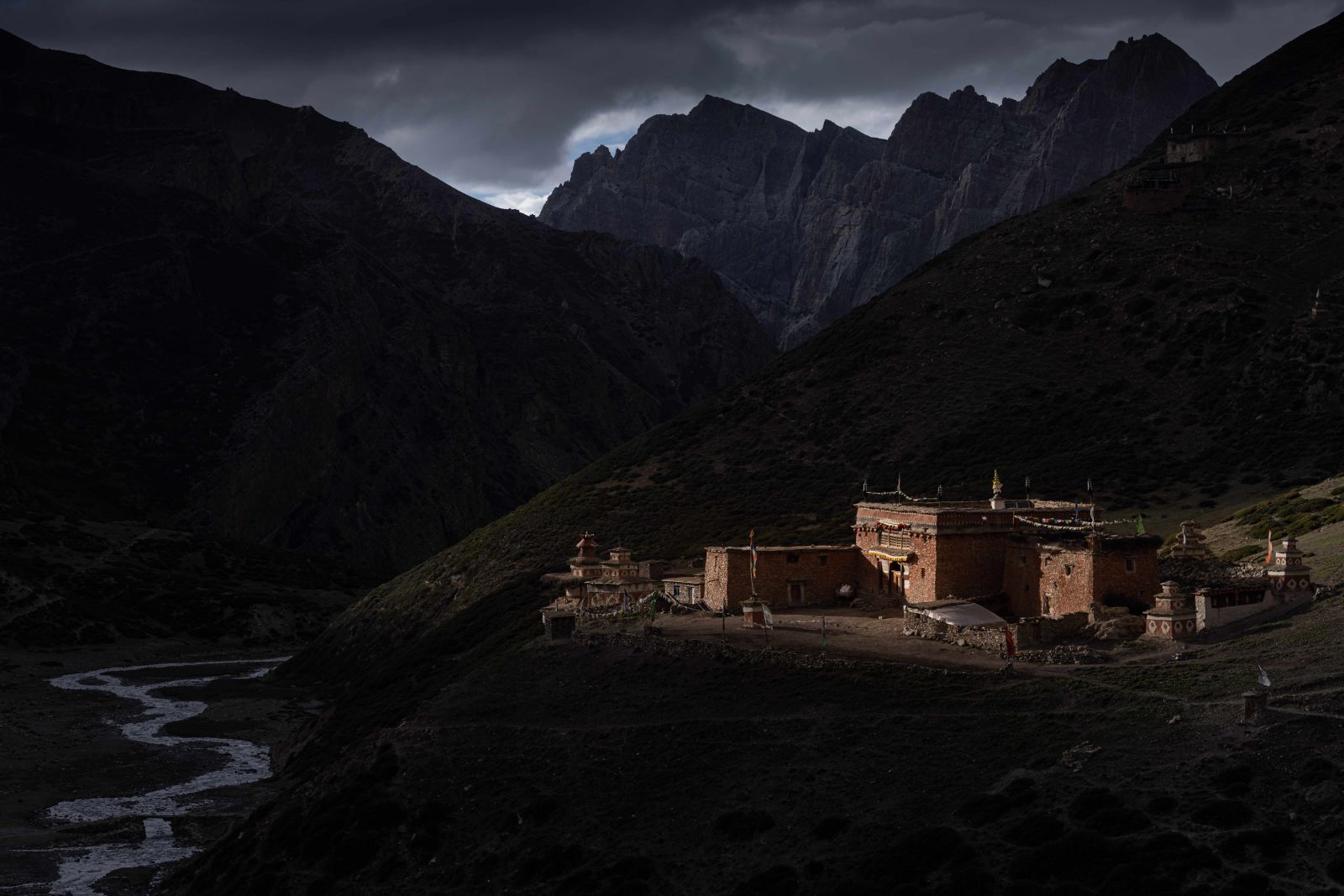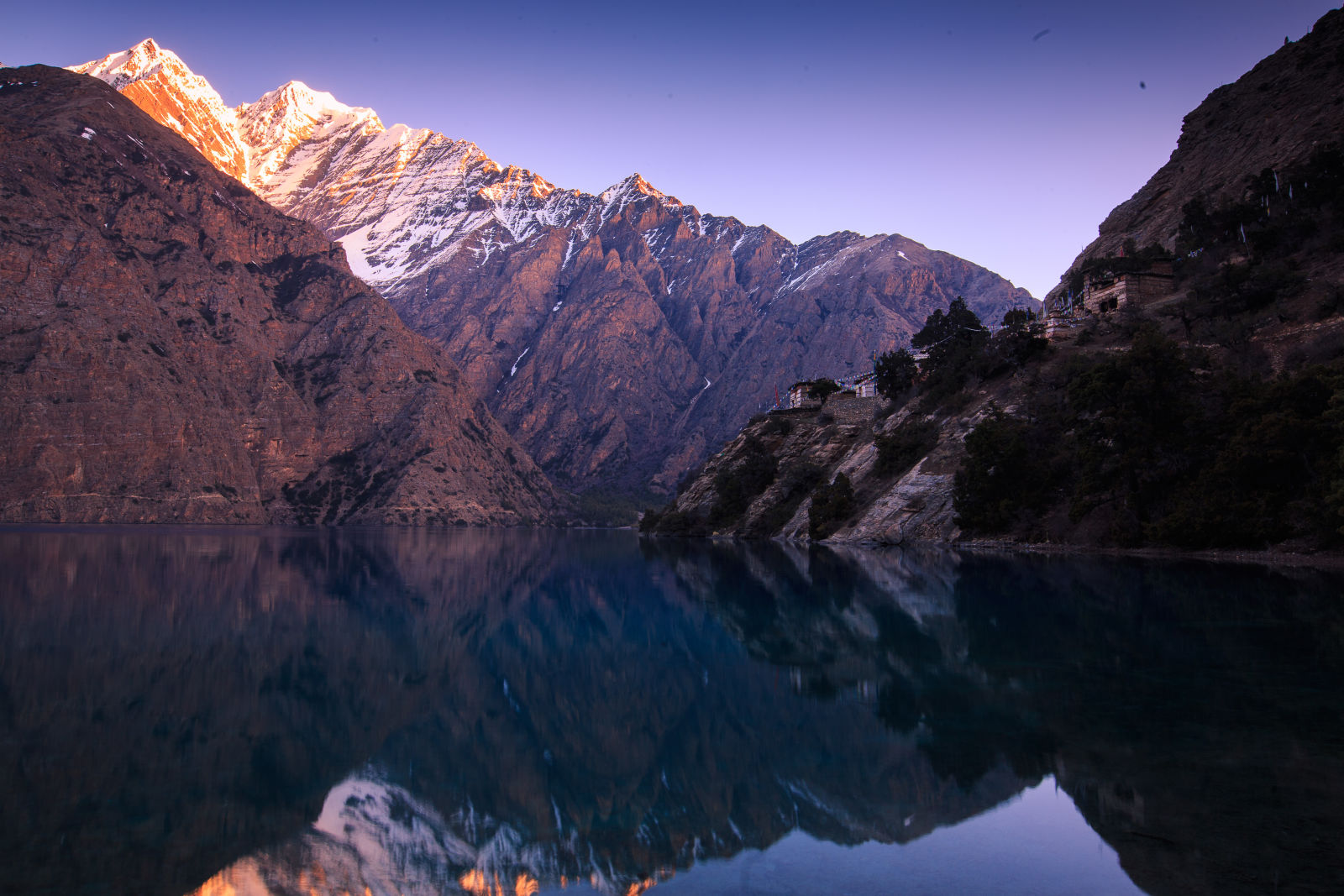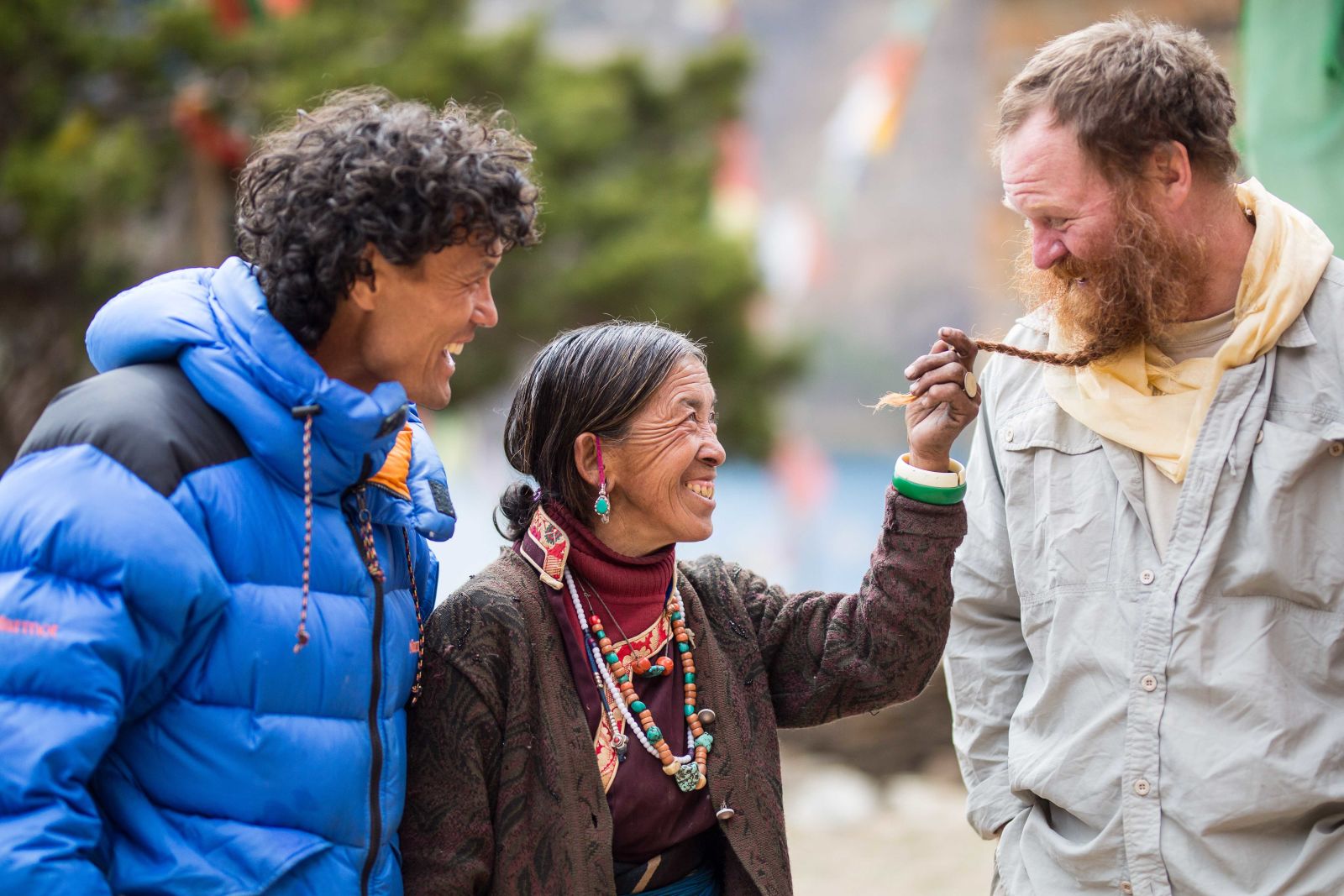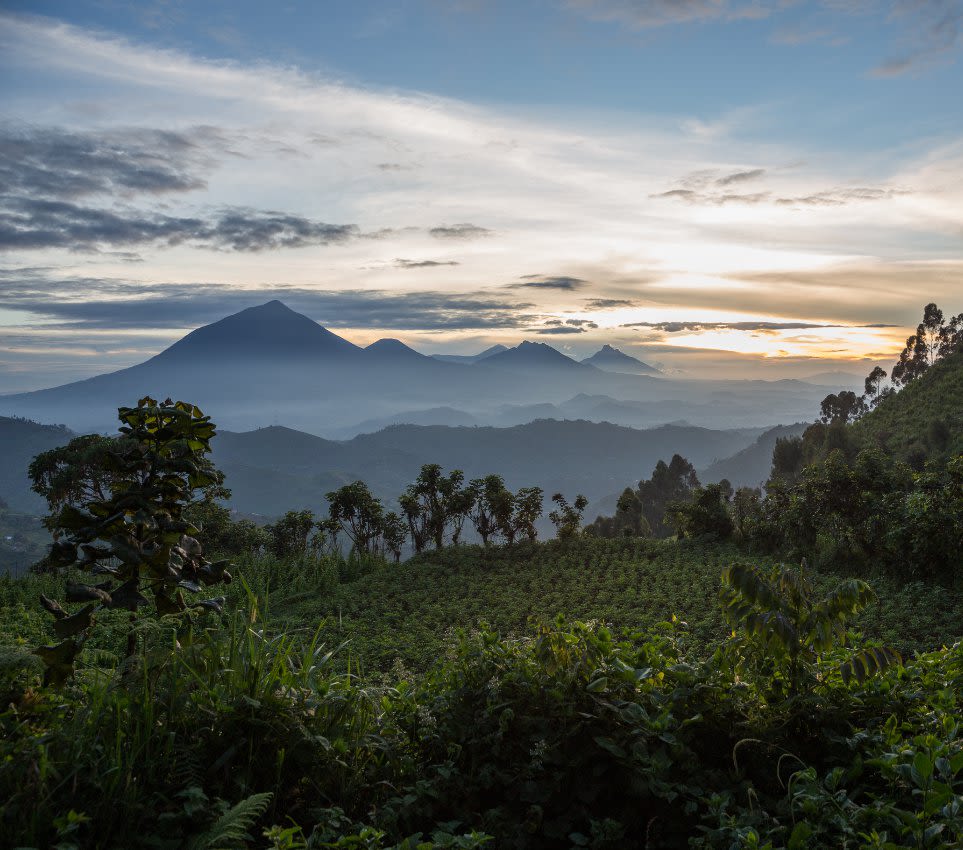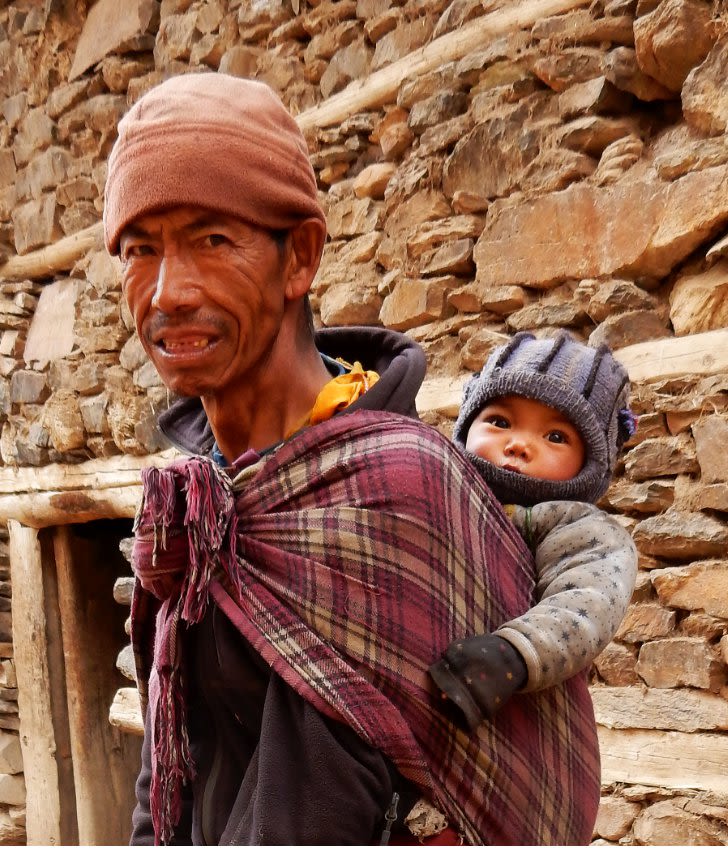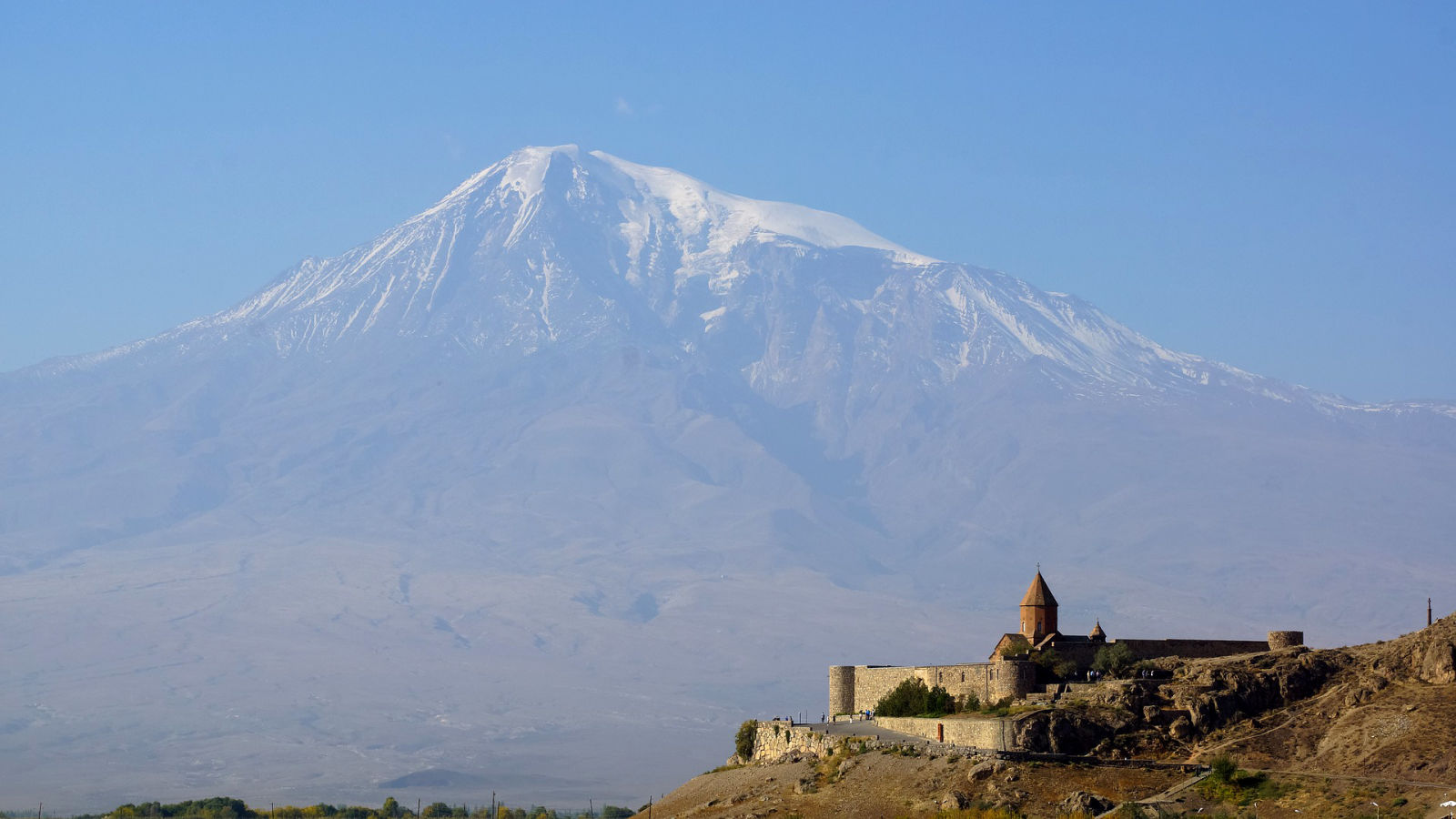scroll-down

06
March
2025
Indigenous conservation beliefs and practices in the High Himalaya
In Upper Dolpo, religious beliefs and cultural practices have evolved to protect animals and natural environments. These beliefs are often misunderstood, misrepresented and are in danger of being lost as more western approaches to centralised conservation and natural resource management become dominant.
Deep in the High Himalaya of North West Nepal, the 15th Century Thasung Tsoling Gompa (Monastery) perches spectacularly on a promontory of land beside the stunning ethereal waters of Lake Phoksundo at around 3700 metres in altitude. From the monastery, the high snowcapped peaks of Kanjirowa Himal (over 6600M) soar above a ring of seemingly impenetrable rock at the other side of the Lake. An improbable path is carved into the cliff – sometimes known as the Demon’s path – it is the main route from this area to Upper Dolpo . Numerous prayer flags inscribed with Bon and Buddhist mantras flutter in the wind endowing sacred blessings on the people and land.
Protecting wildlife
Around 600 years ago, the site of this spectacular monastery was not chosen just for its sublime and truly spiritual location, but as a strategic site to protect wildlife. Information on the Gompa states that ‘ The initial purpose of building the Gompa in this location was to protect the wildlife from hunters because this shore was the best place for traps when animals came for water’ . The name of the gompa itself reflects its purpose Tha – means edge, Sung – protect, Tso – lake, and Ling – island surroundings. So Thasung Tsoling Gompa literally means the Monastery that protects the edge and surroundings of the lake. The Monastery is therefore a testament to indigenous conservation practices that existed for centuries, well before the formation of the Shey Phoksundo National Park, Nepal’s largest National Park established in 1984.
A belief that animals and environment are interlinked practically and spiritually
The protection of animals and environments is a key component of the Bon religion that is the main religion of Upper Dolpo. Bon builds on ancient animist beliefs with Buddhist practices. Lamas and religions leaders will explain that the deities live within the landscape and animals are the ‘livestock of the deities’. The hillside and mountain reflections on the lake and the twisted rock formations of the area create the illusions the faces and bodies of humans, animals and mythical beasts, and to locals are proof that the landscape is alive and has spirituality and sentience. Crimes against the environment and animals can have dire consequences for those living locally. Lamas will tell of the floods and landslides caused by those who have killed animals, damaged forests and in so doing disrespected the deities.
Sanctuaries for animals
At another nearby monastery, the Thegchen Rabgyling Gompa, high on a hillside above the traditional Bon village of Pungmo, the resident lama says that the snow leopard and the animals that are its usual prey (Bharal – the goat/sheep of the high Himal, and musk deer )regularly come to the gompa. He says that they gather in peace and that each animal is blessed, no animal is above another and from the insect to the snow leopard none is more important. 10 years ago, Pungmo village established an indigenous conservation organisation connected to the ICCA Consortium, an international association of indigenous peoples. They created a photo story about their beliefs and conservation practices and, their later thwarted, aims to set up a conservation organisation (this video can still be viewed on YouTube here). As this video highlights, the community perceives the practices of Nepal’s largest National Park, Shey Phoksundo, as being negative to the environment and rather than working in collaboration with indigenous beliefs and practices, actually undermining them.
Collaring snow leopard against indigenous beliefs
One recent example of conflict and misunderstanding between indigenous beliefs and centralised conservation was the 2019 satellite collaring of two snow leopard in this area. The collaring was reportedly perceived by local communities, leaders and lamas as breaking a taboo that snow leopards must not be touched by humans. In traditional beliefs, the spirit of a snow leopard will be lost and the animal will die if touched by humans, precipitating the wrath of the deities and negative impacts in the local area. Community fears were realised when within a year and a half both animals died. Soon after local extreme weather events were perceived as have fulfilled people’s worst fears. To compound the rift between communities and National Parks/conservationists, communities were accused of having killed one of the two Leopards. Despite community opposition, WWF and the National Parks continue to collar snow leopards in the local area.
Towards greater collaboration between conservationists and indigenous peoples
It would be wrong to portray the relationship between conservation and local communities in Dolpo as one merely of division and conflict. The National Parks and WWF have established community snow leopard conservation committees to support conservation and allow communities to apply for compensation when their livestock are predated on by snow leopards. People from within the communities are employed within the national park, sometimes at relatively influential levels and local people from the villages of the area have become influential in snow leopard conservation. But as in many areas where conservation practices have marginalised indigenous peoples (see our blog on the Batwa Forest people of Uganda) there appears to have been a huge opportunity missed - the opportunity to build on long established practices and indigenous beliefs to support conservation and to build on indigenous wisdom and systems.
From conserving a species – to conserving ecosystems and recognising indigenous people within these ecosystems
Western inspired and supported conservation has often made the mistake of focusing in on apex species such as the snow leopard or mountain gorilla, while indigenous beliefs often recognise the interconnectedness of all animals and the environment (and the humans place within this eco-system). The mistake of focusing on an apex species rather than an interconnected ecosystem is increasingly being recognised in conservation circles, perhaps if we had listened more to indigenous peoples and valued their beliefs and practices then we would have come to this conclusion much more quickly.
Dolpo 13th to 31st October 2025: Documenting Indigenous beliefs and Practices in Dolpo
In October we will be taking a small group to the high villages of Dolo to explore and document the beliefs and practices of the people of Dolpo around conservation. Our aim is to write a more detailed paper on this to highlight the opportunity to interlink conservation and local practices and beliefs. Places are available on this journey: Contact us for more information

06
March
2025
Indigenous conservation beliefs and practices in the High Himalaya
In Upper Dolpo, religious beliefs and cultural practices have evolved to protect animals and natural environments. These beliefs are often misunderstood, misrepresented and are in danger of being lost as more western approaches to centralised conservation and natural resource management become dominant.
Deep in the High Himalaya of North West Nepal, the 15th Century Thasung Tsoling Gompa (Monastery) perches spectacularly on a promontory of land beside the stunning ethereal waters of Lake Phoksundo at around 3700 metres in altitude. From the monastery, the high snowcapped peaks of Kanjirowa Himal (over 6600M) soar above a ring of seemingly impenetrable rock at the other side of the Lake. An improbable path is carved into the cliff – sometimes known as the Demon’s path – it is the main route from this area to Upper Dolpo . Numerous prayer flags inscribed with Bon and Buddhist mantras flutter in the wind endowing sacred blessings on the people and land.
Protecting wildlife
Around 600 years ago, the site of this spectacular monastery was not chosen just for its sublime and truly spiritual location, but as a strategic site to protect wildlife. Information on the Gompa states that ‘ The initial purpose of building the Gompa in this location was to protect the wildlife from hunters because this shore was the best place for traps when animals came for water’ . The name of the gompa itself reflects its purpose Tha – means edge, Sung – protect, Tso – lake, and Ling – island surroundings. So Thasung Tsoling Gompa literally means the Monastery that protects the edge and surroundings of the lake. The Monastery is therefore a testament to indigenous conservation practices that existed for centuries, well before the formation of the Shey Phoksundo National Park, Nepal’s largest National Park established in 1984.
A belief that animals and environment are interlinked practically and spiritually
The protection of animals and environments is a key component of the Bon religion that is the main religion of Upper Dolpo. Bon builds on ancient animist beliefs with Buddhist practices. Lamas and religions leaders will explain that the deities live within the landscape and animals are the ‘livestock of the deities’. The hillside and mountain reflections on the lake and the twisted rock formations of the area create the illusions the faces and bodies of humans, animals and mythical beasts, and to locals are proof that the landscape is alive and has spirituality and sentience. Crimes against the environment and animals can have dire consequences for those living locally. Lamas will tell of the floods and landslides caused by those who have killed animals, damaged forests and in so doing disrespected the deities.
Sanctuaries for animals
At another nearby monastery, the Thegchen Rabgyling Gompa, high on a hillside above the traditional Bon village of Pungmo, the resident lama says that the snow leopard and the animals that are its usual prey (Bharal – the goat/sheep of the high Himal, and musk deer )regularly come to the gompa. He says that they gather in peace and that each animal is blessed, no animal is above another and from the insect to the snow leopard none is more important. 10 years ago, Pungmo village established an indigenous conservation organisation connected to the ICCA Consortium, an international association of indigenous peoples. They created a photo story about their beliefs and conservation practices and, their later thwarted, aims to set up a conservation organisation (this video can still be viewed on YouTube here). As this video highlights, the community perceives the practices of Nepal’s largest National Park, Shey Phoksundo, as being negative to the environment and rather than working in collaboration with indigenous beliefs and practices, actually undermining them.
Collaring snow leopard against indigenous beliefs
One recent example of conflict and misunderstanding between indigenous beliefs and centralised conservation was the 2019 satellite collaring of two snow leopard in this area. The collaring was reportedly perceived by local communities, leaders and lamas as breaking a taboo that snow leopards must not be touched by humans. In traditional beliefs, the spirit of a snow leopard will be lost and the animal will die if touched by humans, precipitating the wrath of the deities and negative impacts in the local area. Community fears were realised when within a year and a half both animals died. Soon after local extreme weather events were perceived as have fulfilled people’s worst fears. To compound the rift between communities and National Parks/conservationists, communities were accused of having killed one of the two Leopards. Despite community opposition, WWF and the National Parks continue to collar snow leopards in the local area.
Towards greater collaboration between conservationists and indigenous peoples
It would be wrong to portray the relationship between conservation and local communities in Dolpo as one merely of division and conflict. The National Parks and WWF have established community snow leopard conservation committees to support conservation and allow communities to apply for compensation when their livestock are predated on by snow leopards. People from within the communities are employed within the national park, sometimes at relatively influential levels and local people from the villages of the area have become influential in snow leopard conservation. But as in many areas where conservation practices have marginalised indigenous peoples (see our blog on the Batwa Forest people of Uganda) there appears to have been a huge opportunity missed - the opportunity to build on long established practices and indigenous beliefs to support conservation and to build on indigenous wisdom and systems.
From conserving a species – to conserving ecosystems and recognising indigenous people within these ecosystems
Western inspired and supported conservation has often made the mistake of focusing in on apex species such as the snow leopard or mountain gorilla, while indigenous beliefs often recognise the interconnectedness of all animals and the environment (and the humans place within this eco-system). The mistake of focusing on an apex species rather than an interconnected ecosystem is increasingly being recognised in conservation circles, perhaps if we had listened more to indigenous peoples and valued their beliefs and practices then we would have come to this conclusion much more quickly.
Dolpo 13th to 31st October 2025: Documenting Indigenous beliefs and Practices in Dolpo
In October we will be taking a small group to the high villages of Dolo to explore and document the beliefs and practices of the people of Dolpo around conservation. Our aim is to write a more detailed paper on this to highlight the opportunity to interlink conservation and local practices and beliefs. Places are available on this journey: Contact us for more information




